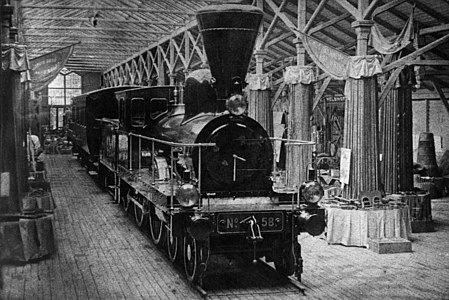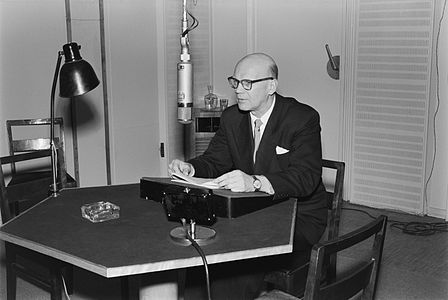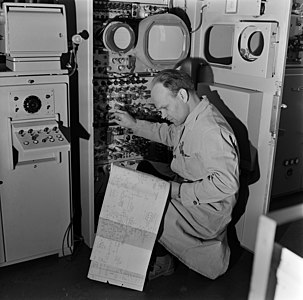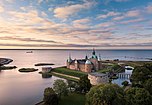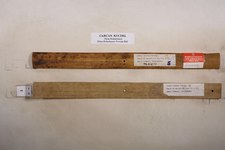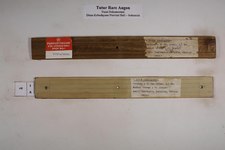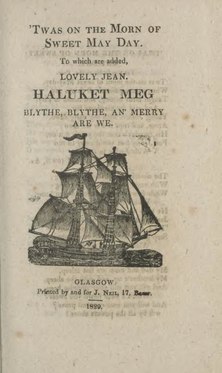GLAM/Newsletter/December 2020/Single
|
Wrap up of the Wikipedia in African Libraries project pilot cohort
Wrap up of the Wikipedia in African Libraries project pilot cohort
After a call for participants to enrol for the pilot cohort, a total of 60 were selected and we managed to commence our live sessions on 16th November (Orientation) and thereafter 4 live sessions delivered weekly between 24th November to 16th December on Zoom and the Moodle platform.
Note that the course content and curriculum were an adaptation of the OCLC curriculum. With the help of experienced Wikipedians who are also active librarians on the African continent, we were able to address the fundamentals of Wikipedia in sessions such as Wikipedia for you, your library, and your community as well as Evaluating Wikipedia with a critical eye. The practical part and editing was addressed under "Contribute to the Wikipedia body of knowledge" while community engagement and involvement were dealt with under "Wikipedia empowers your community".
You can access more of the work done and delivered by visiting the project's meta page.
We have a number of programs under the project coming up in 2021 and we will keep you posted, happy holidays...
Branding Toolkit released by the Canadian Museums Association for GLAMs
Branding Toolkit released by the Canadian Museums Association
The Canadian Museums Association unveiled a new toolkit created to help members of the GLAM community (galleries, libraries, archives and museums) spread the word about the findings in the Study on the Value of GLAMs, released earlier in the year. The announcement can be found on the following page, museums.ca
Hundreds of thousands of new photos released
The Finnish Heritage Agency has made over 200 000 hi-res images freely accessible
The Finnish Heritage Agency has released over 200 000 high resolution images with the CC BY 4.0 license. Ismo Malinen, Chief Intendant of the Picture Collections writes in this blogpost High-resolution pictures made freely accessible – why? about the process of the reasoning that lead to making the images freely available – first in smaller resolution and finally in high resolution. The images are shared via a dedicated view in the Finnish national aggregator Finna.
The Picture Collections comprises of altogether 18 million images in the Ethnographic and Finno-Ugric Picture Collections, the Historical Picture Collection, the Press Photo Archive, the Architectural History Collection, and The Finnish Maritime Museum’s Picture Collection. They provide great opportunities for enriching for example the articles about the history of Finland once uploaded. Malinen writes: "It is already clear that the wonderful national collections will keep on becoming more open – for everyone’s benefit and amusement."
-
Sunbathing by the mountain
-
Queen of Sweden Karin Månsdotter
-
Three employees filling ampoules at Oy Medica Ab's pharmaceutical plant. Photo: Eeva Rista, 1973.
-
M.Sc. Lenita Airisto by Kuvasiskot, 1976
Bot uploading images to Wikimedia Commons
A semi-automatic bot operated by Zache has been busy at work already for a few years and commons:Category:Files uploaded by FinnaUploadBot already contains over 15k images. Bot's target is to add date, place, subject and the creator information in the structured data format. The copyright status of photos in this set can be complicated, because freedom of panorama in Finland is only partial: it applies to buildings but not statues, for instance. It's therefore all the more important to improve the metadata so that photos are associated to the place or subject.
-
The second locomotive made in Finland at the first Finnish industrial exhibition in Kaivopuisto. Photo: Charles Riis, 1876
-
Helsinki Railway Station Restaurant. Photo: Eric Sundström, 1929
-
The timing of the running competitions at the 1952 Helsinki Olympics. Photo: Olympia-kuva
Finnish Broadcasting Company Yle switches from Flickr to Wikimedia Commons for Open Access to cultural heritage
Finnish Broadcasting Company's Archives have started to publish their archive photographs to Wikimedia Commons instead of Flickr which they previously used. Yle Archives' open photograph collection at Wikimedia Commons contains over 270 pictures and the number is growing. Photograps are in the public domain.
- Yle, 2020-11-20, Ylen arkistovalokuvat muuttavat Wikimedia Commonsiin (Yle's blogpost in Finnish)
-
Broadcast van with a wood gas generator, 1940s
-
Radio announcer Ebba Jakobson-Lilius in a continuity unit, 1930s
-
Presidential candidate (later president) Urho Kekkonen speaking on the radio, 1956
-
Device for airing films on tv and technician Jorma Rautakallio, 1958
The Karl-Preusker-Medal 2020 goes to Wikimedia Deutschland e. V.
Wikimedia Deutschland was awarded the Karl-Preusker-Medal


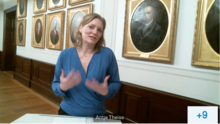

The Bibliothek und Information Deutschland (BID) e.V., the umbrella organisation of library associations, has awarded the Karl-Preusker-Medal 2020 to the non-profit association Wikimedia Deutschland e. V. In doing so, the federal association is honouring the decades-long partnership that has linked libraries and Wikimedia Deutschland e. V. since the association was founded in 2004. The award ceremony took place online on 18th November 2020 and was broadcasted on the internet by the University of Rostock.
The laudatory speech was given by Antje Theise, director of the Rostock University Library.
"Libraries and Wikimedia are particularly connected through their great common goals: Both work to make knowledge freely accessible, to provide open educational content and to advance the digitisation of knowledge. Both see themselves as actively shaping our information society," said Abraham Taherivand, Executive Director of Wikimedia Deutschland e. V.
Because of this common orientation, Wikimedia and libraries have repeatedly worked together closely and to mutual advantage. Wikimedia projects received, among other things, valuable references and digitised material from the libraries' holdings, and libraries received important impulses for their digital transformation.
The award ceremony was followed by a panel discussion about "Focus on cooperation and networking with libraries". Among other things, the panel explored the question which projects can easily be accessed by libraries, what opportunities Structured and Linked Data offer libraries and how open software Wikibase can support libraries in the digital world as an ecosystem.
On the occasion of the award, Wikimedia Deutschland also published the WikiLibrary Manifesto together with the German National Library. The manifesto concretises the vision of a reliable, machine-readable and collaboratively built open data network for art, culture and science. Wikibase, the software of the free knowledge database Wikidata, is used for this purpose. You can read more about it here.
Documentation of workflows for the ingestion of bibliographic data into Wikidata; Wikipedia & Africa: Why contributing to Wikipedia matters
Documentation of workflows for the ingestion of bibliographic data into Wikidata

Thanks to the WikiCite e-scholarship programme I documented possible workflows for the ingestion of bibliographic data into Wikidata. The documentation is based on the workflow employed by the African Studies Centre Leiden. The ASC Library uses different workflows for ingesting bibliographic data into Wikidata depending on the material type. The library adds journal articles (from the Internet and the library catalogue) via Zotero and QuickStatements and books (from the library catalogue) via OpenRefine and QuickStatements. The documentation is accompanied by three video screencasts. The quality of the screencasts is not perfect but I hope that they are nevertheless useful for many future contributors to WikiCite.
Wikipedia & Africa: Why contributing to Wikipedia matters
On 3 and 4 December 2020, the ASC Library gave a short introduction into Wikipedia and its sister projects for the conference participants of the Africa Knows! Conference. The presenters emphasized the importance of Wikimedia projects for the dissemination of knowledge on Africa and the visibility of Africa research. Click here to see the video.
Māori Women Weavers Edit-a-thon

On the 7th of January 2021 the Aotearoa New Zealand user group held an edit-a-thon to increase the quantity and quality of articles in English Wikipedia as well as the items and data in Wikidata about Māori women weavers. The motivation for this event was serendipitous. It came about as a result of a Christmas present.
I (Ambrosia10) had been given the first two volumes of the ATE Journal of Māori Art by Einebillion for Christmas. On Boxing Day, in a flurry of WikiCite inspired editing, I added the journal, its publisher, editors, articles, and authors to Wikidata. The first full article of the first journal was about the influential Māori weaver Cath Brown. While searching in Wikipedia for more information on Brown, her teachers, the people who influenced her art, and her students, it quickly became apparent that there was a knowledge gap in both English Wikipedia and Wikidata on Māori women weavers.
As is my wont, I vented about this on twitter, expressing my desire to head to the library for an impromptu edit-a-thon to attempt to rectify this. However the library I prefer to frequent was closed over the Christmas/New Year break until the 7th of January. As a result, this was the day I unilaterally picked to hold what initially I anticipated to be a one person effort. But the enthusiasm of a core group of experienced editors from around New Zealand morphed this plan into a much more extensive editing endeavour.
Pakoire, who like me was based in Wellington, was the first to express an interest in joining in, swiftly followed by DrThneed (contributing in Dunedin), Giantflightlessbirds (contributing in Nelson) and MurielMary (contributing in Christchurch). Other Wellington based editors David Nind and Noracrentiss also attended and contributed on the day.
Prior to the edit-a-thon I created a shared Google document listing the weavers who needed to be added to Wikidata or have Wikipedia articles created or expanded about them. This list quickly grew to over 60 weavers and as we had more than a week until the edit-a-thon, we put work into collating research, adding the women we uncovered to Wikidata and, for some women with enough coverage online to make them notable for English Wikipedia, creating at least stub articles on them.
As I explained in the Meetup page for the edit-a-thon, the intended focus of the day was to improve the quality of current English Wikipedia articles on Māori women weavers, with the aim that these would then be available for reuse and hopefully translation into other languages, including into te reo Māori. I was also aware that if data on these women were added to Wikidata, they would be more easily discovered by academics and journalists on whom Wikipedia editors rely to generate secondary sources. Wikidata entries had the added bonus of ensuring these artists would appear on lists in WikiProjects such as WomenInRed and Art+Feminisim, giving encouragement to other editors to create articles about the weavers.
As a result, prior to the edit-a-thon, significant work was undertaken to add numerous Māori women weavers to Wikidata and to create new articles for those sufficiently notable for English Wikipedia.

On the day of the edit-a-thon, editors from around New Zealand enriched the content on Māori women weavers in Wikipedia and Wikidata from sources in three libraries - He Matapihi Molesworth Library at the National Library in Wellington, Elma Turner Library in Nelson and Hocken Library in Dunedin.
A dashboard for the event was created that tracked the efforts of the seven experienced editors participating. By the end of the day content relating to Māori women weavers in Wikipedia and Wikidata had been markedly improved with numerous articles created and over 100,000 words being added.
However, although all the editors came away from this experience with a sense of achievement, as is usual when contributing to Wikipedia and Wikidata, the participants of this event all recognise there is so much more that needs to be done.
GLAMorous end of 2020
Six-month long Wikipedian in residence project is at Belgrade City Library gives great results
A six-month-long Wikipedian in residence at Belgrade City Library project has begun in October. In the first three months of the project, 84 articles were written, 244 articles were illustrated, and 719 files can be found on Wikimedia Commons. During January, Wikipedian in residence will change its department of work and move to the Periodicals Department.
-
A girl from Skadar
-
Prince Aleksandar Karađorđević
-
Filip Višnjić
-
Serbian army in Belgrade
-
Šantić Aleksa
-
Svetozar Marković
Wikipedian in residence at Adligat
The second part of the Wikipedian in residence project in the Society for Culture, Arts and International Cooperation Adligat started on November 10 and lasted until the end of December. During this project, numerous biographies, a list of legacies of the Adligat Society, but also some specific topics such as the First Serbian Complete Bible and the Phototype edition of Miroslav's Gospel were covered. During this project, the Wikipedian in residence wrote 45 new articles, supplemented 40, while he illustrated as many as 202 articles. On this occasion, the Adligat released 444 files, including 5 books and numerous photographs from the private collections of Ljubivoje Ršumović, the famous former mayor of Belgrade Branko Pešić, Nikola Kusovac, Matija Bećković and many others.
In addition to the released files from Adligat, the Wikipedian in residence, by independent engagement, managed to release another 111 files, among which are the famous works of art by Nadežda Petrović, Bogdan Šuput, Milena Pavlović Barila, Kosta Janković, sketches by Sava Šumanović…
-
Branko Pešić's Legacy in Adligat
-
Coptic books from Ethiopia
-
Ljubivoje Ršumović
-
Signature of Queen Elizabeth II
-
Miniature - Miroslav's Gospel
-
Photo of Reli Pardo as an elementary school student
Wikipedian in residence at Cultural center Rex
The Wikipedian in residence project at the Cultural Center Rex lasted during the month of December. During this project, the Wikipedian in residence digitized 154 files, including as many as 21 of their publications and many clippings, which testify to cultural and historical events, debates, projects and events in their organization. 13 new articles have been written, including an article about the Cultural Center Rex, based on which we can see their dynamic history of existence. Thanks to this internship, now on Wikipedia, we can find out numerous information about the recent history of Belgrade, artists from this and the previous century, and events organized by this cultural center. With this project, we have scratched the surface of important topics, to which we will only dedicate ourselves in the future, thanks to the achieved cooperation.
-
Places of suffering and Antifa battle
-
Corners - Turning Europe inside out
-
Gypsies, and dogs by Branko Todorović, debate
-
A story about neighbors who are no more here
-
Pride and politics, debate
-
Man on the road, debate
Edit-a-thons
During December, we held two edit-a-thons within the GLAM program. The first marathon was dedicated to theaters and the second to the Day of Librarians of Serbia. Thanks to these marathons, the Serbian Wikipedia got 60 new articles. The edit-a-thon by the name the Theater Stage on Wikipedia lasted from December 4 to 7, during which 8 participants wrote 20 new articles. The second edit-a-thon was organized in cooperation with the University Library „Svetozar Markovic“ on the occasion of the Day of Librarians and it lasted from December 14 to 20. The marathon was attended by 15 participants, and 40 new articles were written.
Happy New year!
Wiki Loves Monuments submissions livestreamed; Nordiska museet uploads; Sjung med oss, Mamma!
WLM
The images from the Swedish part of Wiki Loves Monuments that were promoted to the international finale were announced during a live streamed event December 11. Among the images are both museums, castles, petroglyphs and ruins, selected from the total of 2009 images uploaded by 65 photographers. The top three images will be announced as part of the Wikipedia 20 birthday celebration January 15.
-
Museum of Work
Dick Wåhlin -
Bläse kalkbruksmuseum
Larissa Borck -
Borgholm castle
Kateryna Baiduzha -
Kalmar castle
Kateryna Baiduzha -
Ljåbodarna
Andreaze -
Långe Jan lighthouse
Kristianwhedberg -
Petroglyphs in Lövåsen
Larissa Borck -
Saint Birgitta's chapel
Kristianwhedberg -
Old wall from Malmbanan, Riksgränsen
Fjallvaxter.och.norrsken -
Vittskövle castle
Kristianwhedberg
Nordiska museet uploads
In December, Nordiska museet uploaded ≈1600 photos from two collections that can now be found on Commons: commons:Category:Images from Nordiska museet: 2020-12
- Nordiska Kompaniet (NK): product photos, marketing photos and event photos from the 1930s–1950s
- Allhems förlag: unpublished photos from the book series Svenska slott och herresäten, an inventory of castles/palaces/manors in Sweden. The photos are all from Södermanland
Also, with help from Albin Larsson, structured data is slowly being added to the museum's files on Wikimedia Commons using a python script. So far, it only writes a "belongs in the collection of Nordiska museet" statement including the collection ID, but depicts statements will be added in the future.
-
Childrens clothes
-
Beckershof mansion
-
Berga mansion
-
Fishnet shirt
Sjung med oss, Mamma!
Sjung med oss, Mamma! ("Sing with us, Mom!") by Alice Tegnér is one of Sweden's most famous song collections for children. They have been sung for over 100 years now and they can easily be passed on to the next generation. The original work consists of a collection of nine songbooks from 1892 to 1934. These have been published in different editions, as can be the case with popular works that emerge over a longer period of time. Now we continue with how this work and editions can be structured as a whole in Wikidata. We will start with the nine editions and then perhaps the songs per edition. Feel free to add suggestions how this can be done in best way!
-
Sjung med oss, Mamma! 1 from 1892
-
Sjung med oss, Mamma! 2 from 1893
-
Sjung med oss, Mamma! 3 from 1895
Wales, Women in Leeds, and the Hajj
Wales 2020 round-up
2020 was busy year for GLAM WIKI in Wales. The National Library of Wales, in partnership with Menter Iaith Mon's resident Wikipedian completed a big project funded by the Welsh Government education department to identify and improve Welsh language content most valuable to school children studying History. Over 100 articles were developed to a high standard and reviewed by experts. The project also saw he release of many Welsh learning resources on an open licence by the Welsh Government, the National Library and Museum and the main Welsh examining body. These were adapted and used to improve Wicipedia articles 20 short Welsh language videos were also created summarising key articles.
The National Library continued to share content openly with Commons and Wikidata throughout the year and have been increasingly active in round-tripping data from Wikimedia projects including the launch of our Dictionary of Welsh Biography Timeline, which uses Wikidata, Wikipedia and Commons to add extra functionality and content to their users. The Library are also developing a new crowdsourcing platform which enables users to search and tag images with Wikidata entities using English and Welsh labels.
Currently Menter Iaith Mon and the National Library are working on the Wicipics project, a campaign similar to WikiLovesMonuments to collect images of historical sites in Wales. 1500 images have been donated so far and Welsh language data is being added to Commons and Wikidata for each image/historic site. This images and their bilingual data will also form a new archive Open Access archive at the National Library. It's been a challenging year in many ways but (remote) engagement with Wikiprojects and events has been fantastic. Universities in particular have been very interested in running Wiki events and seminars and hopefully this momentum will continue into 2021! Jason.nlw (talk) 10:56, 6 January 2021 (UTC)
Wikithon: Women in Leeds event
As part of the British Library developing its cultural programme in Yorkshire, working with other GLAM organisations in the region; an online Wikithon: Women in Leeds event was held on 22nd November 2020, to create and improve Wikipedia articles about some of the amazing women of Leeds, past and present. This online edit-a-thon was co-organised by Kenn Taylor from the British Library, in partnership with Rhian Isaac of Leeds Libraries and Lucy Moore of Leeds Museums & Galleries, for the programme of events accompanying the British Library’s exhibition, "Unfinished Business: The Fight for Women’s Rights".
Hope Miyoba, Wikimedian in Residence for the Science Museum Group, who is based at the National Science and Media Museum in Bradford, gave an excellent training session on how to edit Wikipedia to 29 attendees. The event produced new articles for Catherine Mary Buckton, the first woman elected to public office in Leeds, sharpshooter and circus performer Florence Shufflebottom, and philanthropist Marjorie Ziff who is notable for her contributions to the Jewish community in Leeds, whose article was further improved by the Women in Red editing community.
Positive feedback was received from participants, with comments such as ‘my 9 year old daughter says she wants to do this forever’, ‘just finished Uni and missing researching things, so this is definitely a good lockdown activity to get into!’ and ‘I’m thinking about how to incorporate women and Wikipedia entries into my teaching!’. Stella Wisdom (talk) 19:48, 8 January 2021 (UTC)
Khalili Collections
There are two new articles from the Khalili Collections project, bringing the total to sixteen. A volunteer translated the full Khalili Collection of Japanese Art article into Malay and a new article on the Khalili Collection of Aramaic Documents was accepted into mainspace and has passed DYK review.
I have been concentrating on articles relating to the Hajj, which is the subject of one of the larger Khalili Collections. A mahmal is a ceremonial litter that was carried by pilgrims to Mecca every year for several centuries. A sitarah is the embroidered cloth covering of the Kaaba. The Anis Al-Hujjaj is an account of a 17th century Hajj by a court official of the Mughal Empire. I have been working on new drafts about these concepts with research resources supplied by the Khalili Collections, as well as an overview article about the Khalili Collection of Hajj and the Arts of Pilgrimage. Fifteen images related to the Hajj were uploaded to this category on Commons, plus a higher-resolution version of a previously uploaded image. There will be a bulk upload of Hajj images in the near future.
WikiConference North America and Salons
WikiConference North America 2020
On December 11 to 13, 2020, WikiConference North America was held remotely, with a Program. There are videos of the culture crawl, lightning talks, and panel discussions.
-
WikiJournals presentation
-
Wikimedia Sustainability Initiative presentation
WikiSalon, December 12, 2020
Wikimedians in Philadelphia, held a zoom workshop, Philadelphia/WikiConference 2020-12-12
Chicanx Art and Artists
The Smithsonian Institution and Wikimedia DC held a workshop, Wikipedia Edit-a-Thon: Chicanx Art and Artists Edition
-
Chicanx Artists presentation
WikiWednesday Salon
Wikimedia New York City held a salon. NYC/December 2020
The GLAM & Culture office hours
As some of the GLAM newsletter readers may already know, for the last three months, the GLAM and Culture team at the Wikimedia Foundation has been holding monthly office hours. There is a specific topic each month with a Foundation host and guest presenters from the movement. The meetings are intended as an open forum, a place for Wikimedians and GLAM professionals to share ideas, conversations, and creativity.
The meetings usually take place in Zoom and there are two slots each month to reach different time zones. January's GLAM & Culture office hours will introduce project grants for community organizing. Join us on Monday 25 January 4.30-5.30pm UTC or Tuesday 26 January 9.30am-10.30pm UTC.
Stay tuned to this page for joining details and information about the following months.
Below, you can find documentation of last year's events:
September: IIIF on Wikimedia Commons

The first GLAM & Culture office hours happened in September and it was about potential GLAM use cases for IIIF, especially on Wikimedia Commons. At the Monday meeting, the presenter was Evan Prodromou, Product Manager in the Foundation's Platform team. Evan gave a general introduction to the Foundation's new API service. On Tuesday, Jason Evans, National Wikimedian at the National Library of Wales, shared his experience of IIIF.
The National Library of Wales has been contributing to Wikimedia for five years and there are already 20,000 images from its collections available on Wikimedia Commons. When Wikidata approved a property for the IIIF manifest, the institution contributed 15,000 items to Wikidata with IIIF manifests.
The IIIF metadata started to get used by others, including an Italian website that is now displaying all the NLW images, without actually having a digital copy of those works, and is also pulling in all the metadata that is associated with those manifests.
Jason also demonstrated how IIIF allows you to clearly state where in an image something is depicted. The image position can be saved in Wikidata and then queried, or even extracted in a IIIF manifest to be used on other platforms.
Therefore the use of IIIF, according to Jason, would accomplish three goals: enhance Commons data, improve import and export options, and have more potential for reuse.
This subject attracted more than 60 participants across the two meetings, including Wikimedians, affiliate staff, and GLAM professionals from the Smithsonian, Metropolitan Museum, DPLA, The Getty, Wellcome Collection, National Gallery UK, Huntington Art Gallery, Harvard Library, V&A, British Library, and Princeton University Library. These attendees were polled to determine the most interesting IIIF use cases for Wikimedia Commons.
Top three from Monday’s meeting:
- Dynamic redisplay of images (e.g. zoom, crops, etc) for reuse on Wikipedia and elsewhere: 65%
- Aggregating Wikimedia images with other IIIF-compatible sources: 48%
- Wikimedia Commons as a free IIIF server for GLAMs and other contributors: 42%
Top three from Tuesday’s meeting:
- Wikimedia Commons as a free IIIF server for GLAMs and other contributors: 83%
- Simplifying bulk contribution of images to Commons: 58%
- Directly annotating media on Wikimedia Commons and Wikipedia: 50%
You can find the collective notes and chat transcripts for both meetings in this document.
October: Structured Data Across Wikimedia

For the October event, we focused on Structured Data, with presentations from Carly Bogen, the Foundation's Program Manager for Structured Data, and Alicia Fagerving and David Haskiya from Wikimedia Sweden.
Carly's presentation introduced the Structured Data Across Wikimedia (SDAW) project, which has the following goals:
- Allow machines to recognize Wikimedia content and suggest relations to other Wikimedia content.
- Design a way to structure articles and pages to enable new content formats.
- Give Wikimedia users a more inviting, more efficient way to search and find content.
So far, the product team has focused on an improved Media Search for Commons. The new Media Search:
- Has an image-focused user interface that will make it easier to find what you're looking for and to discover new things.
- Generates a set of search results that utilizes structured data and is more language-agnostic.
- Has filters for media types and tabs for audio, videos, and categories results.
Carly explained how Wikimedians and institutions can improve the search relevance of a file:
- Add a descriptive title
- Add captions in multiple languages
- Add a detailed description
- Add the file to the relevant categories
- Add depicts statements
This is described in more detail in a new Help page for Media Search.
Carly noted that the “mark as prominent” feature needs to be used more consistently if it is to be included in the search algorithm.
The structured data team will soon add a license filter, which will only use license data contained in structured data statements, so it’s very important that the GLAM community adds license information to the statements.
Finally, Carly posed two questions for the community:
- Should the depicts statements on Wikidata be added to the Commons search index?
- What other statements could most usefully be added to search?
Wikimedia Sweden’s presentation introduced a project that will use Structured Data on Commons to improve discovery and use of Wiki Loves Monuments images. WMSE will add at least 250,000 new ‘’Depicts’’ and ‘’Participant in’’ statements to Sweden’s Wiki Loves Monuments entries, focusing on those that have relevant Wikidata items. They will share their process and tools, which could be useful for other Wiki Loves campaigns, or for museums that have added depicts information to Wikidata.
There were more than 30 attendees across the two sessions, with good representation from cultural institutions, affiliates, and the broader community. At the end, there was a conversation about less useful depicts statements being added to Commons and how to prioritize the creation of tools to help with quality control and maintenance.
You can find the collective notes and chat transcripts for both meetings in this document.
November: Wikisource
The November event was dedicated to Wikisource. Satdeep Gill, Program Officer for GLAM and Culture, shared how he’s coordinating across movement stakeholders to improve Wikisource infrastructure. There were also guest presentations by David Kamholz from PanLex, and Sara Thomas from Wikimedia UK.
Satdeep opened his remarks by saying that he believes Wikisource is a major part of the essential infrastructure for free knowledge. It is imperative to have a really good transcription platform, especially so that underrepresented languages can have their own digital library. Wikisource hasn’t had a lot of investment in its infrastructure and has been mainly volunteer built.
Satdeep shared an overview of the Wikisource workflow, with an overlay of projects that are being worked on this year. These small projects have been supported in different ways—some via the Community Wishlist Survey 2020, others by Wikimedia Foundation grants, and another was achieved through a Google Summer of Code mentorship.
Satdeep shared the recently launched Pagelist Widget, which improves the visualization of files and pages, as well as user experience and editing. It has already been enabled on 25 Wikisources. He also previewed Wikisource Export and encouraged people to give their feedback on the proposed designs.
David’s presentation was about a grant-funded project to develop a Balinese palm-leaf transcription platform on Wikisource.
The starting point for this project was the Balinese Digital Library, which was created in 2011 by the Internet Archive in partnership with major Balinese collections. It made available digital photographs of 3,000 works, containing 130,000 leaves, and covering all aspects of Balinese culture for centuries. However, it turned out that images alone were not enough. They were hard to use, read, and share and the Internet Archive wanted to create something more useful and engage the community.
PanLex applied for a Wikimedia Foundation project grant to have a new Balinese Wikisource as the long-term home for the transcription platform and its works. The project encompassed:
- Uploading scans to Commons
- Importing existing work from Palm Leaf Wiki
- Adding Balinese fonts to the Universal Language Selector
- ProofreadPage improvements for content language
- Balinese Language Converter for transliteration
- User script to activate transcription interface and transliteration
Interestingly, the Balinese Wikisource editing interface uses IIIF to retrieve a high resolution tile for only the part of the image that is being transcribed, reducing data usage in low resource contexts.
Sara’s presentation, Responding to Covid: The National Library of Scotland & Wikisource introduced WikiProject NLS.
In 2020, the National Library of Scotland’s building closed due to the Covid-19 pandemic and they wanted a productive and valuable work-from-home activity for staff. They had a longstanding collaboration with Wikimedia UK and had already considered using Wikisource as an alternative to their in-house OCR, which is auto-generated with no facility to correct it. They decided to correct the OCR for a collection of over 3,000 Scottish chapbooks, which had been recently digitized and made available on the Library's Digital Gallery. The chapbooks covered a wide range of topics and, at just 10-20 pages per book, could be transcribed in a day.
With more than 70 staff members, it was one of the largest professional cohorts Wikimedia UK has ever engaged, and most staff hadn’t tried Wikimedia projects before. The library wanted to complete all 3,000 books so they worked with two members of the Wikisource community to agree on a more limited use of Wikisource templates, striking a balance between completeness and speed.
Library staff reported enjoying the work and the project brought this important collection to a broader audience. Sara concluded that Wikisource probably isn’t a replacement for a better in-house OCR, and ultimately the main benefit of the project was staff learning how to use Wikimedia platforms.
More than 30 participants joined the November meetings, including British Library staff who expressed an interest in learning more about the Balinese palm leaf project by PanLex. Staff from the Foundation were able to address some of the specific issues encountered on the National Library of Scotland project, noting that Google OCR limits can be removed, and committing to fixing the .txt export issue. The new PageList widget presented by Satdeep addressed another of the challenges.
You can find the collective notes and chat transcripts for both meetings in this document.
January's GLAM events
| <<< previous month | January 2021 | next month >>> | ||||
|---|---|---|---|---|---|---|
| Monday | Tuesday | Wednesday | Thursday | Friday | Saturday | Sunday |
| 28 |
29 |
30 |
31 |
1 | 2 |
3 |
| 4 |
5 |
6 |
7 |
8 |
9 |
10 |
| 11 |
12 |
13 |
14 |
15 |
16 |
17 |
| 18 |
19 |
20 |
21 |
22 |
23 |
24 |
| 25 WMF GLAM team office hours: project grants for community organizing.
|
26 WMF GLAM team office hours: project grants for community organizing.
|
27 |
28 |
29 |
30 |
31 |






